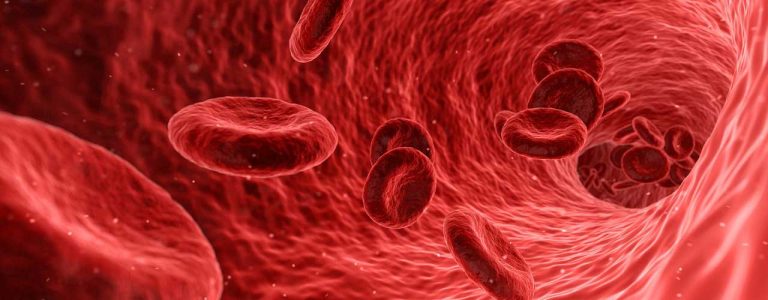What Is Molly?
MDMA, often referred to as molly or ecstasy, is a synthetic drug that affects a person’s mood and can have hallucinogenic effects. It is normally found in pill form or as a crystal powder, which means that there is an increased risk of it being mixed with other drugs.
So, what does taking MDMA do? Taking molly can result in feelings of increased emotional closeness and heightened energy. MDMA use is more common in a party environment and is often associated with feeling ‘loved up’. Some users also experience an increase in sexual arousal.
The effects can last several hours, and the drug can also leave users feeling panicked or anxious. Episodes of paranoia and psychosis can also occur after taking MDMA.
The US Drug Enforcement Administration classes MDMA as a Schedule I drug. This means it has a high potential for abuse and has no currently accepted safe usage in medicine or recreation.
Find help: Orange County Rehabs
How MDMA Works
MDMA, short for 3,4-methylenedioxy-methamphetamine, is a chemical substance with similarities to amphetamines and hallucinogens like mescaline. Molly works by increasing the activity of three chemicals in the brain:
- Serotonin – Impacts appetite and sleep. It also affects the hormones responsible for sexual arousal, trust, and emotional closeness.
- Dopamine – Part of our brain’s reward system and can also increase energy levels.
- Norepinephrine – Increases blood pressure and heart rate.
The Risks of Using Molly
Various animal and human studies have shed light on the potentially dangerous side effects of using molly. One such study cited MDMA as “a major cause of liver injury in people under the age of 25 years.” The same study described the use of MDMA as inducing cellular stress throughout the body. Cellular stress can lead to organ damage and even contribute to other health conditions such as diabetes. Alzheimer’s and cardiovascular diseases can also occur.
MDMA users often experience an increase in body temperature, as well as high blood pressure. Molly has a reputation as a ‘party drug’ and is very popular in nightclubs or at raves. These environments may have a very high volume of people in a relatively small space. High-intensity activity while taking molly can lead to dehydration, hyperthermia, and heat stroke.
Neurological Risks of MDMA Use
The use of ecstasy can also result in toxic cardiac effects, which can threaten a person’s life via a stroke or irregular heart rhythm. The sudden increase in blood pressure as a result of mixing MDMA and alcohol can burst weakened blood vessels, leading to a stroke.
A stroke is a very serious and potentially life-threatening condition. They occur when the supply of blood to the brain reduces or stops altogether. Some of the effects of a stroke are as follows:
- Partial paralysis
- Speech and communication problems
- Brain damage
- Death (if not recognized and treated quickly enough)
The effects of a stroke can be mitigated if medical help is sought quickly enough. This is made more difficult in party environments where people are consuming alcohol or other drugs.
Other Risks of MDMA
There are other health risks involved in taking MDMA. Despite sometimes being seen as a ‘safe’ party drug, there is evidence that molly can also damage the heart. Clinical studies show that the drug is responsible for inducing heart-related toxicity. Taking ecstasy can result in irregular heart rhythm and even sudden cardiac death.
The liver is also at risk from MDMA. The liver metabolizes ecstasy, meaning that this is where the body starts to break down the drug. Animal tests have shown liver damage after MDMA consumption. The byproduct of MDMA metabolization is then responsible for tissue and organ damage throughout the body.
Is MDMA Addictive?
While the addiction research on molly is still ongoing, there are signs that it can be addictive. Part of how molly works is by targeting the brain’s dopamine receptors. This is the part of the brain that helps regulate our ‘reward’ system.
Other substances which target the brain’s dopamine receptors can also be addictive. Habitual use of dopamine-targeting drugs can reduce the user’s interest in activities not already associated with these rewards.
One study on the addictive qualities of MDMA has shown that animals will self-administer the drug when made available. This is a significant indication of its addictive potential. Drugs such as cocaine will also be self-administered by animals, although at higher rates.
How Long It Stays in Your System
How long the high from molly lasts depends on many things: how much was taken, how pure it is, and the use or presence of other drugs or alcohol. On average it might take around twenty minutes for the drug to kick in and the effects can last from two to four hours.
The effects of molly are not all positive and users often experience a ‘comedown’ which can last for up to a week. A comedown is when users feel low or in a depressive mood in the days after using ecstasy. Other symptoms of a comedown include:
- Depression
- Problems sleeping
- Irritability
- Loss of libido
- Loss of appetite
- Memory/attention problems
Mixing Ecstasy and Alcohol
Why is it that so many users mix alcohol with MDMA? This is in part due to alcohol already being consumed in high quantities at parties or all-night music events. The reinforcing effects of alcohol can also increase the danger of MDMA use. This encourages users to keep drinking alcohol, increasing the risk of alcohol poisoning.
A study published in the National Library of Medicine showed that around two-thirds of people regularly taking MDMA did so while consuming alcohol. Of these people consuming both MDMA and alcohol, 69% did so while binge drinking (consuming more than five standard units of alcohol).
Drug Abuse When Drinking Alcohol
Alcohol consumption combined with substance abuse is always risky, and this is no exception. Pills sold at parties can come cut with other illicit drugs and substances, including bath salts. This can have life-threatening consequences, especially if the person is unaware of what other drugs they are taking.
There is always a risk, however, when buying and consuming street drugs, especially those in powder or capsule form. Decreased inhibitions can lead to greater risk-taking behavior and a greater willingness to take dangerous substances. It is also harder to be certain of what’s in them or what underlying health conditions might be exacerbated.
The Dangers of Mixing Molly and Alcohol
There is a heightened risk of experiencing harmful effects when taking any drug when combined with alcohol use. It can be much harder for people to notice the potentially dangerous side effects of this drug when drinking alcohol. Alcohol interactions with MDMA can also lead to adverse reactions by increasing the concentrations of the drug in a person’s blood.
Some of the other negative consequences of using both MDMA and alcohol can include:
- Confusion
- Anxiety
- Blurred vision
- Seizures
- An increased risk of overdose
- High blood pressure
The liver metabolizes both molly and alcohol. This means that consuming more alcohol than normal can slow down the process of metabolization. Mixing ecstasy and alcohol leads to a build-up in the liver which in turn can lead to stronger side effects.
Signs Of Ecstasy And Alcohol Abuse
Ecstasy users may come across as highly talkative and more affectionate or tactile than normal. Consumption of molly can also cause people to grind and tighten their jaw muscles, also known as ‘gurning’.
People who have been binge drinking alcohol may suffer from alcohol poisoning. They can appear confused or unresponsive. Those under the effects of alcohol abuse may even vomit or suffer from hypothermia. A drunk person may even pass out unconscious, which is highly risky.
Alcohol Use Disorder
Alcohol Use Disorder (AUD) is a medical condition characterized by an impaired ability to control alcohol consumption, regardless of any negative effects it may have on the user. It also leads the user to drink more alcohol to achieve the same effects.
People with AUD often experience unpleasant withdrawal symptoms when they stop drinking. Symptoms of alcohol withdrawal include nausea, a rapid heartbeat, problems sleeping, and anxiety. Alcohol withdrawal can even lead to hallucinations or seizures.
There are a number of factors that increase the risk of AUD. One such risk factor is starting to drink at a young age. Some addiction research has shown that those who started drinking before the age of fifteen were five times more likely to develop AUD than those who waited until they were twenty-one. A family history of alcohol problems, as well as certain genetic predispositions, also ranked as influencing factors.
Liver disease is another potential consequence of AUD. Those who drink alcohol to excess can suffer from liver damage due to inflammation and scarring.
Substance Use Disorder
Substance use disorder (SUD), like AUD, is a mental disorder that affects a person’s ability to control their drug use. Up to half of the people suffering from SUD experience a co-occurring mental health disorder, and may use drugs as a means to help cope in the short term. Co-occurring mental health disorders include anxiety, depression, and attention deficit hyperactivity disorder (ADHD), as well as many others.Treatment for Co-Occurring Alcoholism and Molly Addiction
For those suffering as a result of abusing MDMA and alcohol, there are a number of treatment options available.
One of the most important steps for someone suffering from MDMA and alcohol abuse is to speak to someone about it. Finding the right solution for the right situation begins with seeking medical help.
Addiction treatment may take place in an inpatient or outpatient environment and can involve therapies, support groups, and medicine.
Available Treatments for Drug and Alcohol Abuse
Substance use disorder (SUD), like AUD, can be treated with Cognitive Behavior Therapy, or CBT. CBT is a kind of therapy where people talk through and challenge their own destructive thoughts and behaviors in order to better cope with tough situations.
Dialectic Behavior Therapy (DBT) is another kind of talk therapy whereby certain concepts of mindfulness and awareness are utilized to help people deal with intense emotions. This in turn can help replace drugs as a coping mechanism for people suffering from poor mental health.
The US Food and Drug Administration currently approved a number of medications to help combat alcoholism:
- Naltrexone – helps reduce binge drinking
- Disulfiram – inhibits the ability to metabolize alcohol, which can discourage drinking due to the accompanied nausea
- Acamprosate – can help maintain abstinence
Group therapies, such as support groups and therapeutic communities, can also help those suffering from substance abuse.Sometimes just hearing from someone else who is also affected by combining MDMA and alcohol can be the spark needed to make positive changes.
If you are worried about your or a loved one’s MDMA and alcohol abuse then don’t worry, help is out there. Taking the first step towards a better life can start with a simple conversation.
Detox programs like the ones offered at Cornerstone treatment centers start with a personalized treatment plan. Treatments offered can take you all the way from inpatient drug rehab to relapse prevention therapy.
Cornerstone even offers Extended Care Programs (ECP) which have been designed to bridge the gap between drug and alcohol treatment and a return to normal life.
Alcohol and drug abuse don’t have to cost you your health or happiness. A tailor-made solution for your individual circumstances is out there, waiting for you to walk through the door.






